Please visit the Adaptive and Secure Computing Systems (ASCS) Laboratory website for my current projects [Link]
Cognitive computing and the concept of self-aware adaptive computer architectures
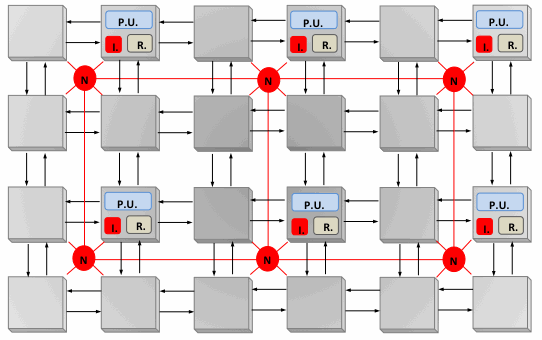
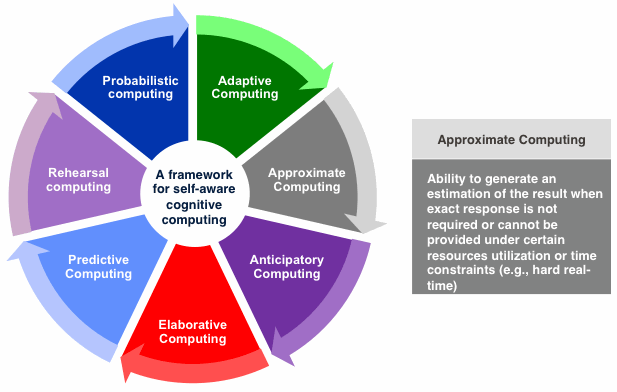
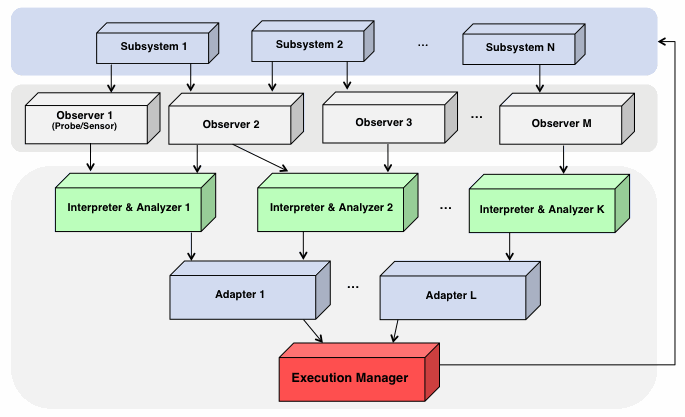
Under this project we are
exploring the design of an architecture
that dynamically adapts and optimizes its execution behavior
according to a set of high-level application goals (e.g., performance
to power ratio, hard real-time constraints, reliability and security
awareness). It represents a new, non-Von Neumann model of
computation and provides a framework for future, cognitive,
probabilistic, and adaptive computer system architectures. Using
various machine learning and control theory techniques, it is able to:
reason about the trade-off between the precision of results and the
computational time or power consumption.
This new paradigm of probabilistic, approximate computing is
particularly appealing to many important and resource intensive
applications such as big data analytics, embedded systems, image and
video processing, and real-time signal or data processing, where under
some modalities, result accuracy can be traded-off for better
performance, hard real-time support, and energy efficiency.
Design space exploration methodologies and tools

We design Heracles, an open-source,
functional, parameterized, synthesizable multicore system toolkit. Such
a multi/many-core design platform is a powerful and versatile research
and teaching tool for architectural exploration and hardware-software
co-design. The Heracles toolkit comprises the soft hardware (HDL)
modules, application compiler, and graphical user interface. It is
designed with a high degree of modularity to support fast exploration
of future multicore processors of different topologies, routing
schemes, processing elements or cores, and memory system
organizations. The Heracles tool is
freely available under the open-source MIT license at: Heracles.
Reconfigurable and adaptive computer architectures
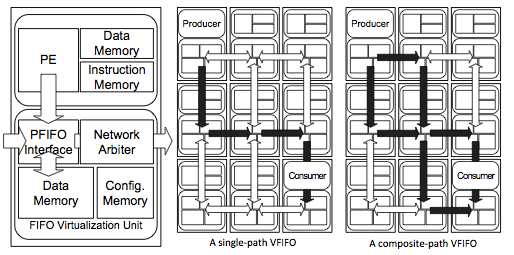
We develop
a high-level computation model with a grid of processing elements
(PEs), called Diastolic Arrays.
A diastolic array is a reconfigurable substrate that is meant to serve
as a co-processing platform in a larger self-adaptive system to speed
up applications or parts of applications that are throughput-sensitive
and latency tolerant. Diastolic arrays are coarser-grained than FPGAs
but finer-grained than multicores.
Adaptive Interconnect Network-on-Chip

My research in this
domain examines bandwidth-aware oblivious routing schemes for NoC
architectures. We introduce various non-minimal, oblivious routing
algorithms that globally allocate network bandwidth for a given
application when estimated bandwidths for data transfers are provided,
while ensuring deadlock freedom with no significant additional hardware.
We present methods that statically allocate channels to flows at each
link when oblivious routing is used, and ensure deadlock freedom for
arbitrary minimal routes when two or more virtual channels are
available. We propose on-chip bandwidth-adaptive networks to mitigate
the performance problems of oblivious routing and the complexity issues
of adaptive routing. In a bandwidth-adaptive network, the bisection
bandwidth of network can adapt to changing network conditions.
Resource-aware computer systems
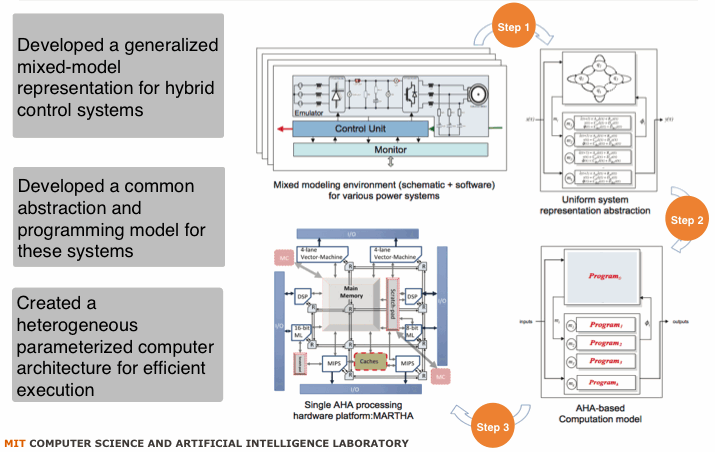
We develop a
Multicore
Architecture for Real-Time Hybrid Applications (MARTHA) with time
predictable execution, low computational latency, and high performance
that meets the requirements for control, emulation and estimation of
next-generation power electronics and smart grid systems. Applications
are modeled as adaptive/switched hybrid automata (AHA/SHA). The MARTHA
architecture is resource and latency-aware. It has heterogeneous
processing units and full predictable execution capability.
Past Projects
Design Automation for Cyber-Physical Systems: Digital Emulation and Control of Power Electronics Systems
 Institute for Soldier
Nanotechnologies
Institute for Soldier
Nanotechnologies
With Dr. Ivan Celanovic
Power electronics is one of the
key physical layers of the “smart grid” that enables highly efficient
and fully controllable flow of electric power, and promises to deliver
up to 30% electric energy savings across all aspects of the conversion
of primary energy into electricity. The current tools for prototyping
power electronics systems are largely based on analog modeling. This
method of simulation and testing is costly and inflexible because even
the smallest change in design requires rebuilding the analog system.
Pure software-based simulation tools are also not suitable because one
is unable to replicate real operational conditions that are critical to
the proper validation of the system under design. The goal of this work
is to raise the level of design tools for power electronics by
developing a new software/hardware design platform for comprehensive
controlling, testing and validation of power systems by means of
high-fidelity, real-time emulation of power electronics in Hardware
in-the-Loop (HiL) configurations. It permits proper validation of
operational scenarios by interfacing the platform with other physical
systems needed to model the environment. The validation includes the
ability to check system real-time responses and interfaces, to identify
failure modes, and to implement recovery states or redundancies in
critical circuits.
This work is now carried on by the MIT spin-off Typhoon HIL, Inc.